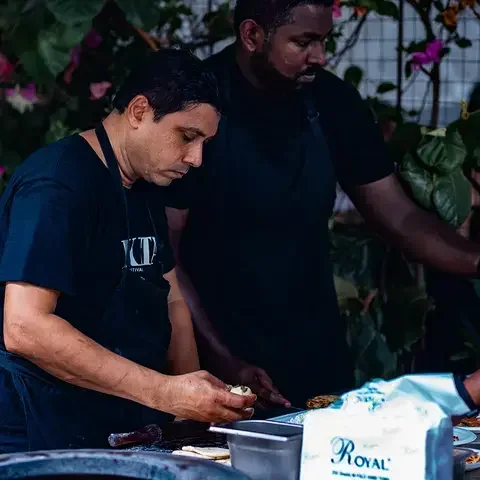We caught up with Kasama’s Tim Flores and Genie Kwon, as they brought their brand of Filipino fine dining to Europe.
It’s a sweltering April day in Madrid and I am marching up and down a busy Salamanca street looking for a door. Eventually, I see it: a small sticker next to a buzzer that says ‘Kasama In Residence’. I’m buzzed in, with those around me at street level going about their daily business probably unaware that I’m about to have lunch cooked for me by potentially Chicago’s hottest restaurant team (and by team, I mean it, as we’ll see), who are popping up in Europe for just a few days.
I feel sorry for those people because more than likely, none or at least very, very few (on account of the restaurant being in Chicago) have tried Kasama’s signature croissant, which is stuffed with truffled délice de Bourgogne cheese, drizzled with honey, and showered with fresh truffle. I enjoy a mini version of the pastry that people queue hours for in Chicago—amongst other things—as the first dessert in a multi-course Filipino-inspired menu at In Residence that doesn’t put a step wrong. It’s a deeply delicious and decadent treat that leads an emotional fellow diner to stand up and hug Genie Kwon, the pastry chef who along with chef husband Tim Flores is the core of Kasama. And this is coming from someone (me), who isn’t a huge truffle fan (deal with it, reader).
Let’s step back a bit. Kasama opened in 2020 and is a bakery during the day and a fine dining restaurant serving an elevated Filipino tasting menu at night. You may have been there without being there—it features briefly in season two of The Bear, during Sydney's food tour of Chicago. They have a Michelin star and a James Beard Award. Kwon, who grew up in New Orleans, and Flores, a Chicago native of Filipino descent, met in Chicago at GT Fish & Oyster and helped to open Noah Sandoval’s Oriole. Flores’ menu is inspired by nostalgia, his mom’s cooking when he was growing up. But his mom wasn’t a fine-dining chef.















